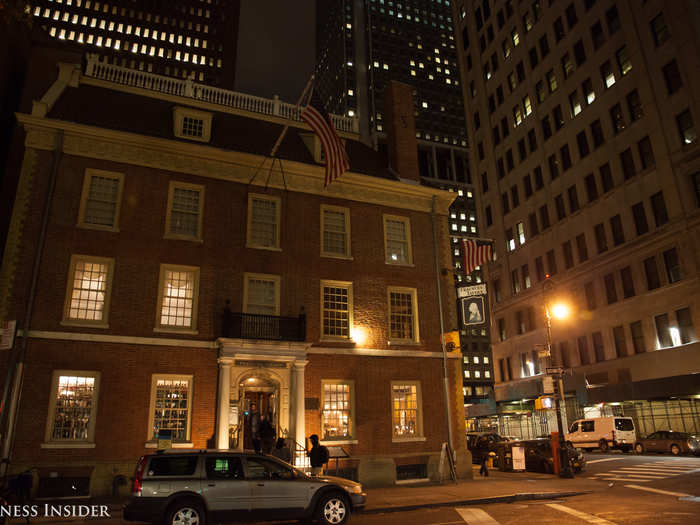New York City's Financial District has a gory, haunted past
New York City's Financial District has a gory, haunted past

New York City's Financial District has a gory, haunted past

If you work near the intersection of Pearl and Broad Streets, you might frequent Fraunces Tavern for happy hour. The tavern is well known for its rich history: George Washington and the Sons of Liberty would come to the Tavern before the start of the Revolutionary War, and Washington held his extremely emotional farewell banquet on the third floor after the War was over. There was also reportedly a murder, and a suicide occurred on the premises in 1712.
Many unverified reports of "paranormal instances" have been said to occur in this tavern. People have reported feeling a slight pressure on their back as though they're being pushed, doors have mysteriously slammed shut, keys have been seen gently swaying as though someone — or something — had brushed their finger along them. Janes also told the group a bartender's tale of both a night porter and a bouncer who once quit mid-shift for undisclosed reasons.
New York City's Financial District has a gory, haunted past

As Janes led us to Federal Hall on Wall Street, she told the group, "If you are a tour guide who loves 18th-century history, you will think of Wall Street not as a place where money was traded, but where human flesh was bought and sold."
In 1736, at the foot of Wall Street closer to the water, she explained, you would find a slave market. In fact, after Charleston, North Carolina, New York was the single largest slave-owning port city in the British colonies.
Back in 1741, Federal Hall was known as British City Hall. On the top floor was a jail, and in the basement, a dungeon. During the slave rebellion of that year, more than 100 men were captured and imprisoned in the dungeon and kept for the entire summer. Many of the prisoners were killed without warrant.
New York City's Financial District has a gory, haunted past

The Trinity Church we know today is the third iteration of the church and was built in the 1830s, but its graveyard has been around since the 1690s. That's plenty of time for lots and lots of dead bodies to be buried. So many, in fact, that in 1822 the sexton of the Church found himself desperate to find new spots for the newly deceased.
According to Janes, the sexton would "go around with a spade, testing the earth and see where it was soft, where the coffins and corpses had become decrepit enough that you could dig right into them, and take the bones into the charnel house, and bury somebody new."
Today, there are over 120,000 shallowly buried bodies in the Church's graveyard.
New York City's Financial District has a gory, haunted past

In the late 1770s, New York City was a very different place, and Janes painted a fantastic, chilling image during our last stop just inside the City Hall Park grounds, near Broadway and Chambers Street.
At the time of the Revolutionary War, City Hall did not yet exist. In its place were two jailhouses, filled to the brim with American soldiers who had been caught by the British. Prisoners were either starved or served moldy bread made with flour that was sometimes laced with arsenic. Their close quarters caused disease, such as smallpox, to spread like wildfire. Sometimes, if a "particularly sadistic officer" was watching during the night shifts, Janes explained, a couple dozen prisoners would be rounded up, bound and gagged, and hung without due process or trial — right on Chambers Street.
The plot of land pictured above, behind the lamp post, was the burial site for these murders. Skulls and human remains are sometimes discovered there when ground is broken for new buildings in the area.
As the night came to an end, our fellow tour members left with a new perspective of the neighborhood — hurrying to the train a little faster than when we first arrived.
Popular Right Now
Popular Keywords
Advertisement